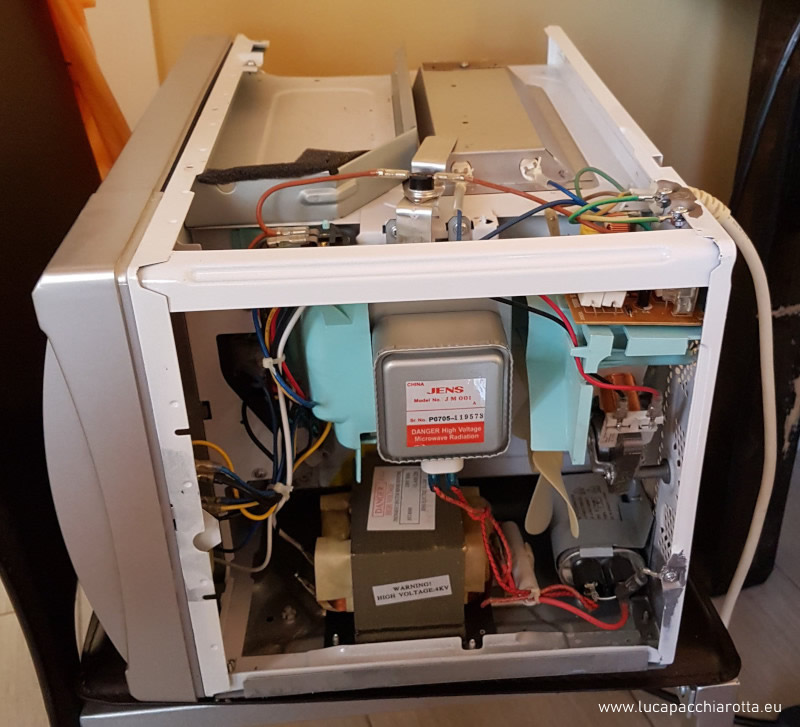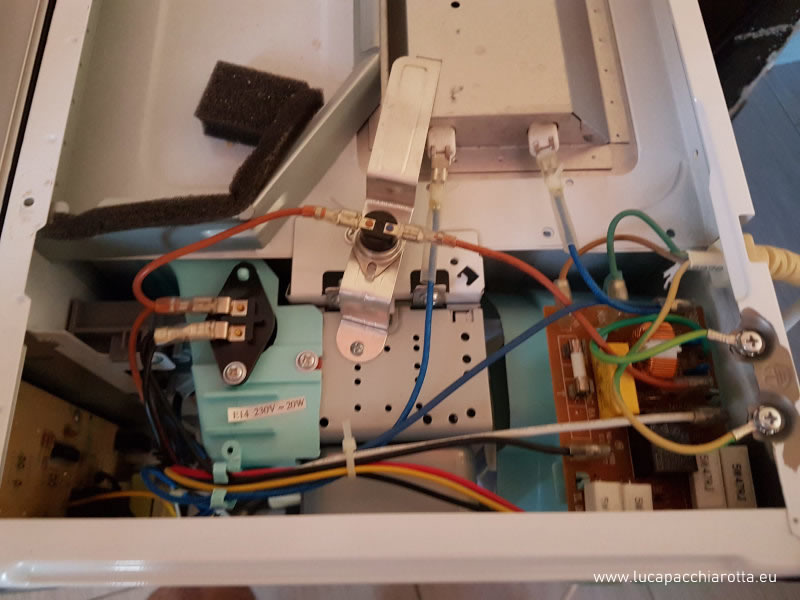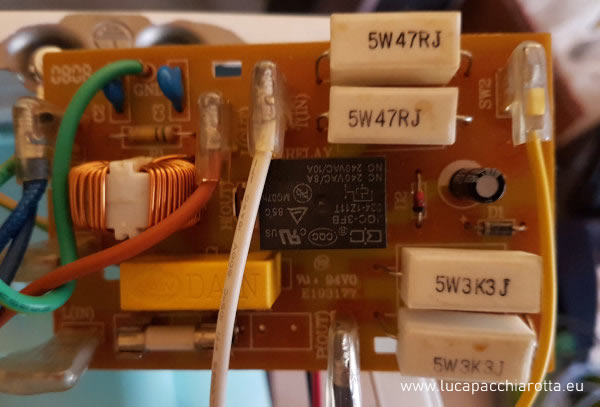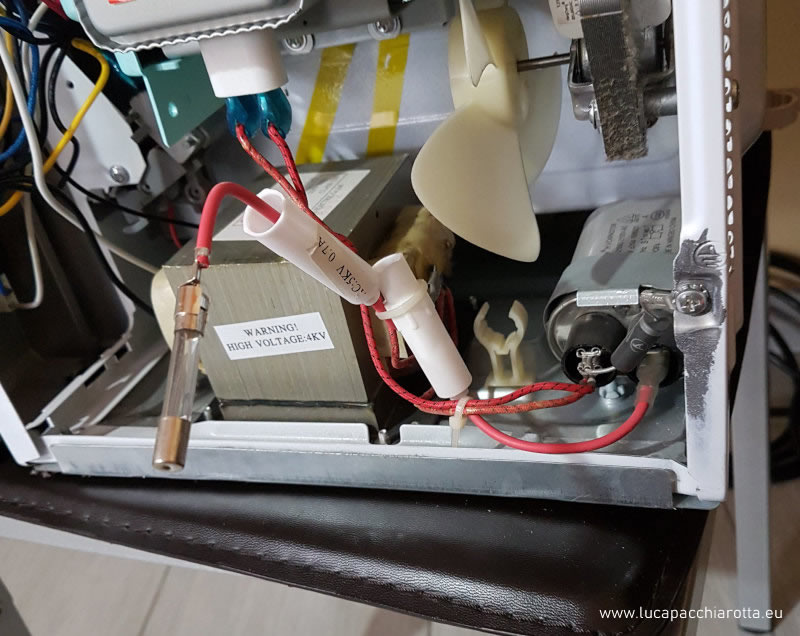How to repair a broken microwave oven?

I have a microwave oven at home that has always done its job, until one day it just stopped working. “Nooo, it broke!” was my first thought. Undoubtfully, a broken microwave makes everyday life harder! I noticed that the oven turns on, the interior lights work, the plate rotates, but the food remains cold. Given my innate passion for trying to fix stuff, before throwing it away, I decided to disassemble it, in hopes of figuring out what the problem might be. I’ll show you hot to repair a broken microwave oven!
Before starting the repair of a broken microwave oven
Attention!
Disassembling a microwave oven, can be a potentially dangerous process. As I will explain later on, there is a large capacitor inside it, that works with thousands of volts. A residual charge can be lethal to humans.
After well-informing myself about the operating principle of the microwave (I will go into more depth about this later), I began the process of disassembling.
Below, is what the inside of the oven looks like:

From this image, it is clearly visible that there are only a few electronic elements. You can see the primary PCB at the top, the 4kV transformer at the bottom (hence the danger to humans), the magnetron in the centre (which generates the actual microwaves), and also the 5kV capacitor at the bottom right.
I started looking for the issue in the primary PCB, which receives a voltage of 230V, and where the transformer activation relay is present.

This is the layout of the electronic board:

Now, notice that white cylindric container just next to the transformer. What will ever be inside of it? This!

A nice, burned fuse!! From this point, I ordered a new fuse with the same characteristics (5kV 0.7A- or 700mA), then I carefully set it up, well tightening the sides of the fuse. Finally, the microwave oven started working as always.
Conclusions
This experience taught me that trying to repair something that is no longer working, can result in great satisfactions. By avoiding sending household appliances that still work to landfills, you help nature. Moreover, you get to save the money you would have spent to replace that household appliance. And finally, knowing you did a fine job and learned something new, brings great satisfaction. So, if you happen to have a broken microwave oven, do not despair. There is a chance to make it work again!